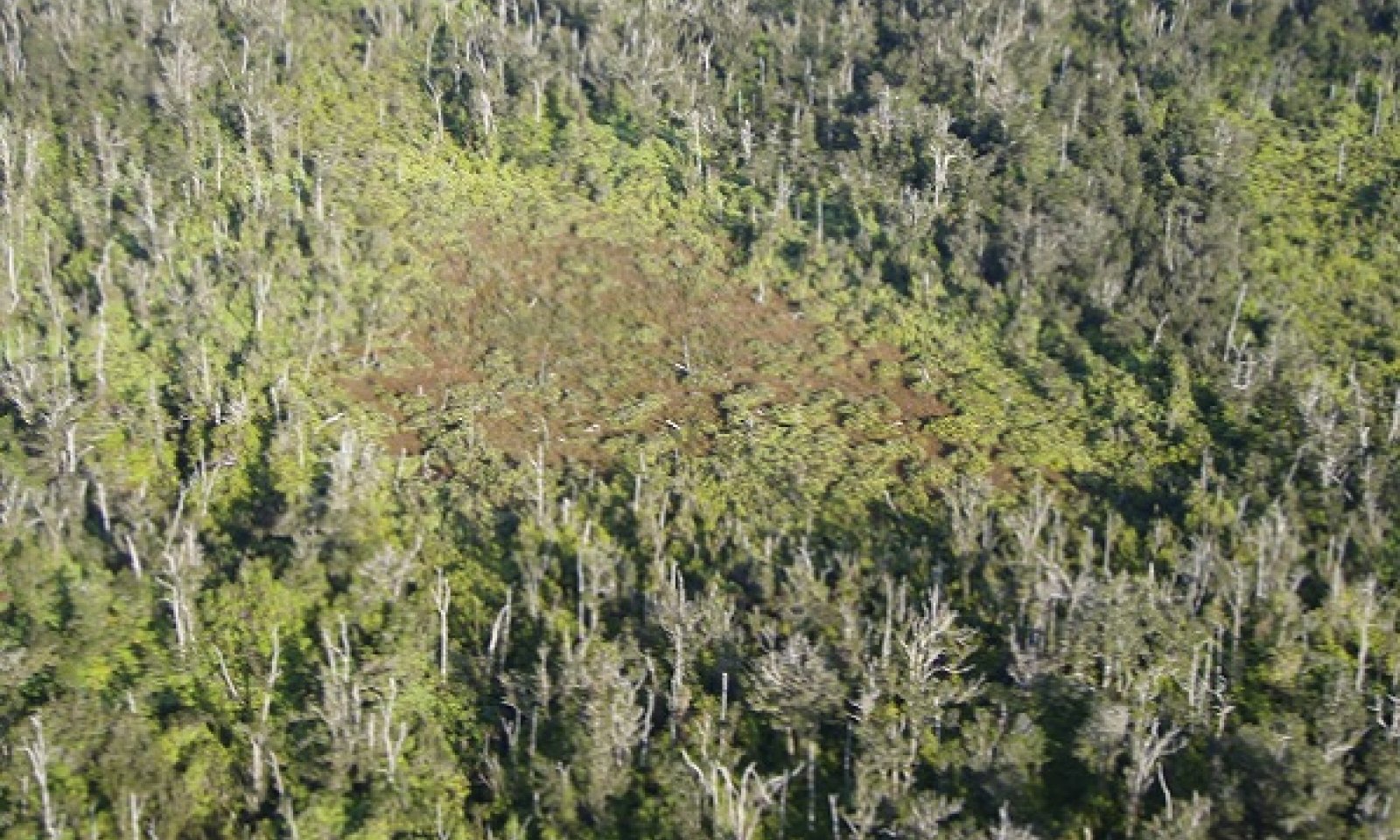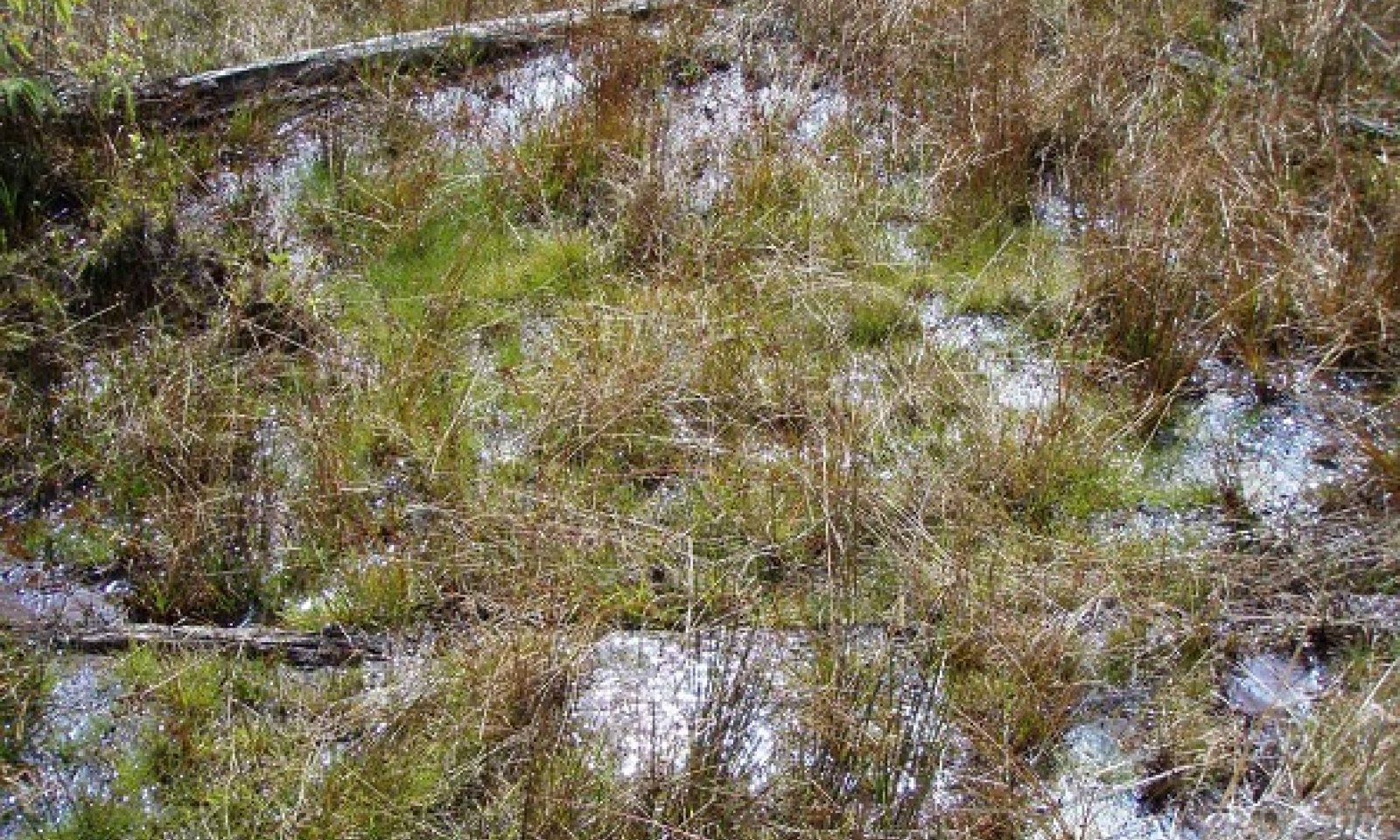
Isothermic Aquic Bog
Scenario model
Current ecosystem state
Select a state
Management practices/drivers
Select a transition or restoration pathway
- Transition T1A More details
- Restoration pathway R2A More details
-
No transition or restoration pathway between the selected states has been described
Target ecosystem state
Select a state
Description
This state is comprised of one community phase. We observed no examples of this community phase that were not dominated by introduced species. It consists of flat areas of soils that are saturated to the surface or shallowly flooded or ponded. These areas are surrounded by medium-stature forest vegetation described for ecological site F159AY504. Vegetation is sedges, rushes, and grasses. Small ohia lehua trees, ohelo shrubs, and uluhe fern grow on fallen logs and old stumps within the bogs.
Submodel
State 2
Weed-Invaded State



Description
This state is comprised of one community phase. It comes into being by gradual invasion of introduced species. Disturbance of the soil and direct damage to native plants by introduced ungulates, particularly pigs and cattle, will likely facilitate the transition to this state.
Submodel
Mechanism
State 1, the Reference State, transitions to State 2, Weed-Invaded State, by invasion of introduced grass, sedge, rush, and forb species. Disturbance by feral cattle and pigs may hasten this process.
Mechanism
Restoration of State 2 Weed-Invaded State to State 1 Reference State or a facsimile of it may be possible by installing pig-proof fence, removing all ungulates, removal of introduced species by hand weeding, and replanting native species when needed. Long term weed management and fence maintenance would be necessary. We are aware of no attempts at this restoration. Because we observed no undisturbed, weed-free examples of this ecological site, attempts at restoration would be speculative as to species composition.
Model keys
Briefcase
Add ecological sites and Major Land Resource Areas to your briefcase by clicking on the briefcase (![]() ) icon wherever it occurs. Drag and drop items to reorder. Cookies are used to store briefcase items between browsing sessions. Because of this, the number of items that can be added to your briefcase is limited, and briefcase items added on one device and browser cannot be accessed from another device or browser. Users who do not wish to place cookies on their devices should not use the briefcase tool. Briefcase cookies serve no other purpose than described here and are deleted whenever browsing history is cleared.
) icon wherever it occurs. Drag and drop items to reorder. Cookies are used to store briefcase items between browsing sessions. Because of this, the number of items that can be added to your briefcase is limited, and briefcase items added on one device and browser cannot be accessed from another device or browser. Users who do not wish to place cookies on their devices should not use the briefcase tool. Briefcase cookies serve no other purpose than described here and are deleted whenever browsing history is cleared.
Ecological sites
Major Land Resource Areas
The Ecosystem Dynamics Interpretive Tool is an information system framework developed by the USDA-ARS Jornada Experimental Range, USDA Natural Resources Conservation Service, and New Mexico State University.

